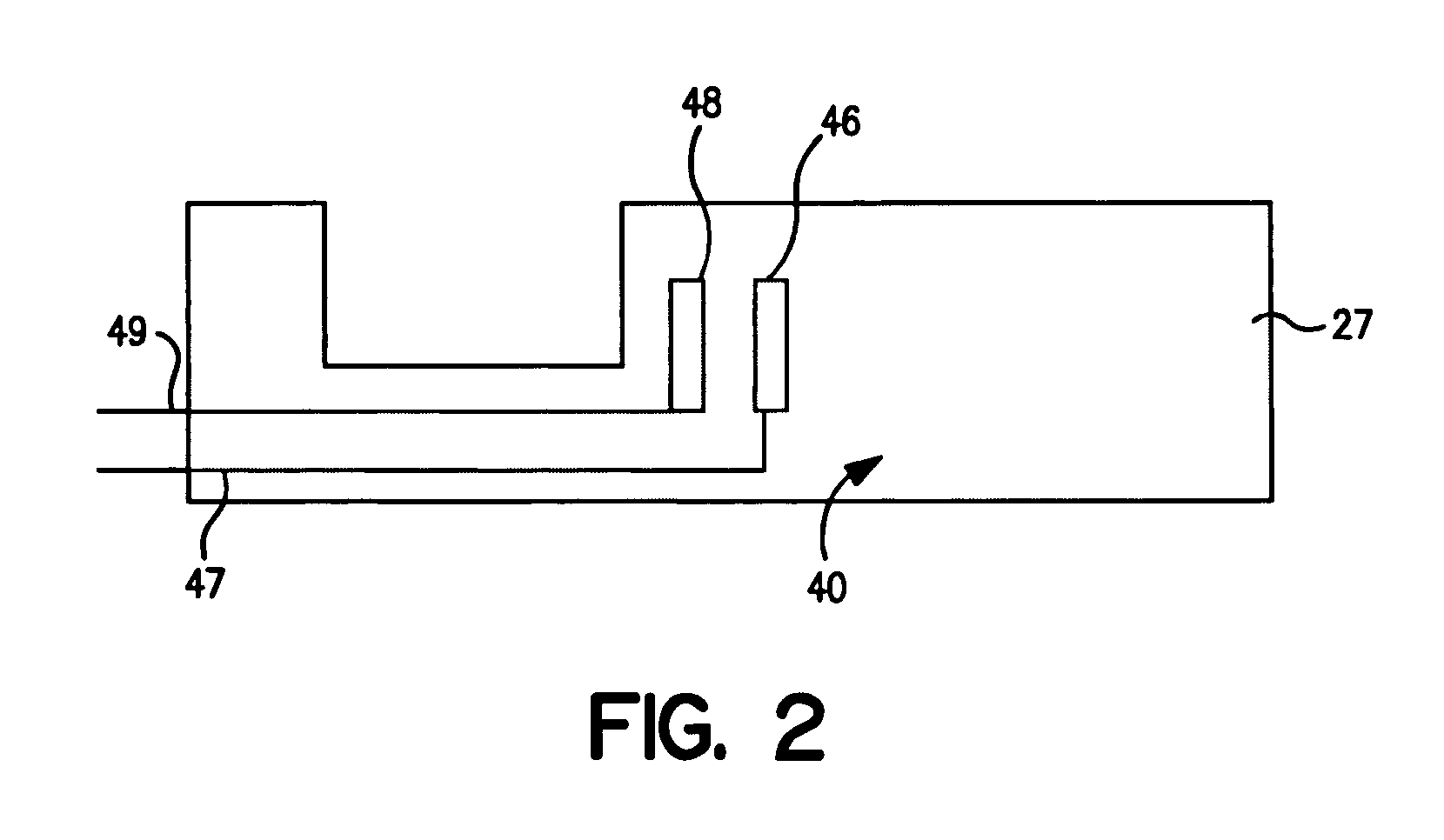Laminated assay devices
a technology of assay device and assay electrode, which is applied in the field of analytical procedures and devices, can solve the problems of large sample volume, insufficient contact of sample with working electrode surface, and inconvenient use of conventional flow-through electrochemical biosensors,
- Summary
- Abstract
- Description
- Claims
- Application Information
AI Technical Summary
Problems solved by technology
Method used
Image
Examples
example 1
[0067] The ability to form laminated assay devices, such as shown in FIGS. 1-4, was demonstrated.
[0068] The bottom strips: The bottom strips were formed from a Mylar® plastic substrate available from DuPont. The substrate had a thickness of 0.25 to 0.38 millimeters, a length of 5 centimeters, and a width of 1.3 centimeters. The substrate was initially printed with a silver ink line (5000) obtained from DuPont Biosensor Group of Research Triangle Park, N.C. The line had a width of 0.1 centimeters and a length of 1 centimeter in the area to be adjacent to the conductive lead, and a width of 0.05 centimeters and a length of 1 centimeter in the area to be adjacent to the carbon electrode. Next, a detection working electrode was printed over the silver ink line with carbon ink (7101) obtained from DuPont Biosensor Group of Research Triangle Park, N.C. The detection working electrode had a width of 0.1 centimeters and a length of 0.3 centimeters. The connection between the carbon working...
example 2
[0075] Laminated assay devices were formed in the manner described in Example 1. Thereafter, test samples were applied to the sample pad of the devices in an amount ranging from 10 to 100 microliters. The test sample contained an LH antigen in a concentration of 100 nanograms per milliliter in PBS buffer (pH of 7.42). The assay was allowed to develop until the wicking pad had absorbed almost all of the fluid from the test sample, which occurred in about 2 to about 15 minutes. A TMB substrate solution was then applied to the working electrode in an amount ranging from 10 to 30 microliters. Thereafter, a potential of about 0.1 to 0.3 volts was applied using a multi-channel VMP potentiostat commercially available from Perkin-Elmer, Inc. of Wellesley, Mass. The current was recorded after about 20 seconds, and effectively indicated the presence of the LH antigen.
PUM
| Property | Measurement | Unit |
|---|---|---|
| Current | aaaaa | aaaaa |
| Affinity | aaaaa | aaaaa |
Abstract
Description
Claims
Application Information
 Login to View More
Login to View More - R&D
- Intellectual Property
- Life Sciences
- Materials
- Tech Scout
- Unparalleled Data Quality
- Higher Quality Content
- 60% Fewer Hallucinations
Browse by: Latest US Patents, China's latest patents, Technical Efficacy Thesaurus, Application Domain, Technology Topic, Popular Technical Reports.
© 2025 PatSnap. All rights reserved.Legal|Privacy policy|Modern Slavery Act Transparency Statement|Sitemap|About US| Contact US: help@patsnap.com



